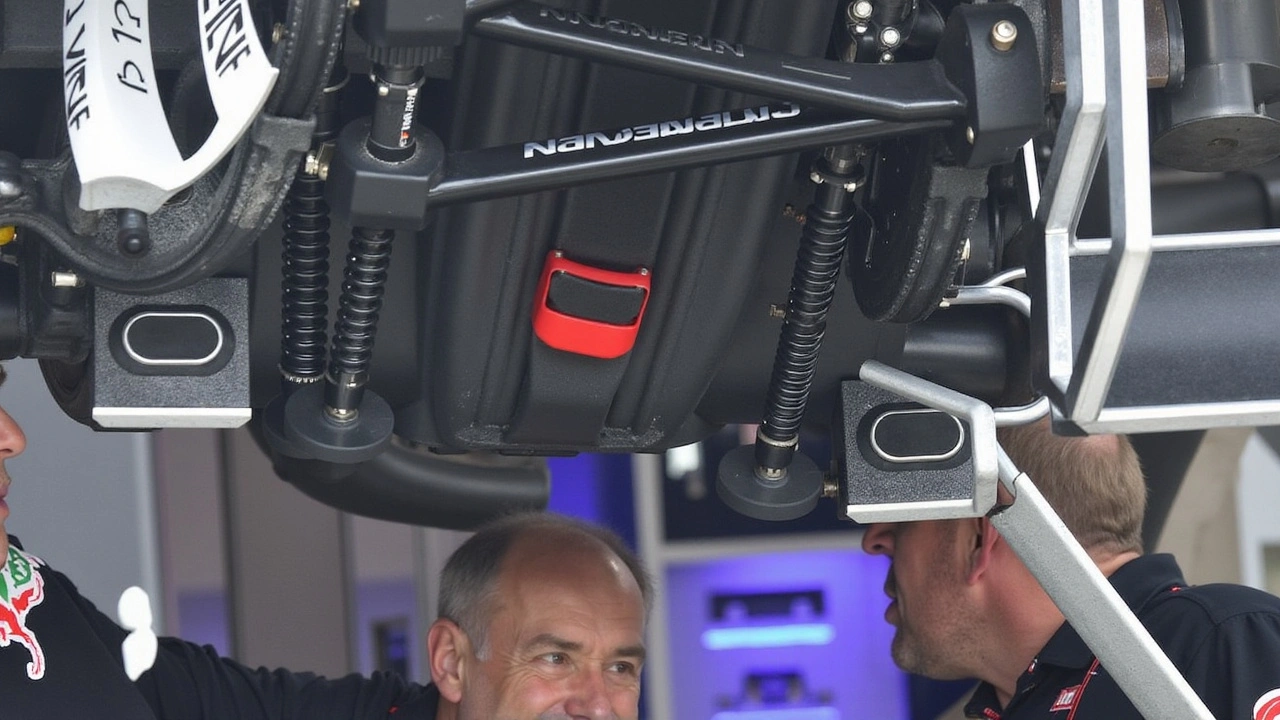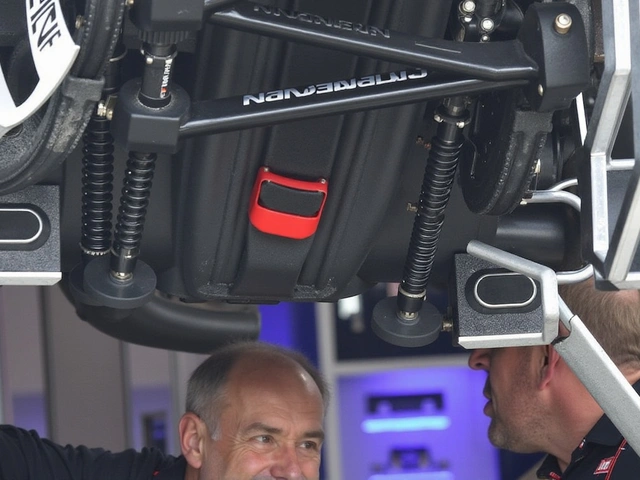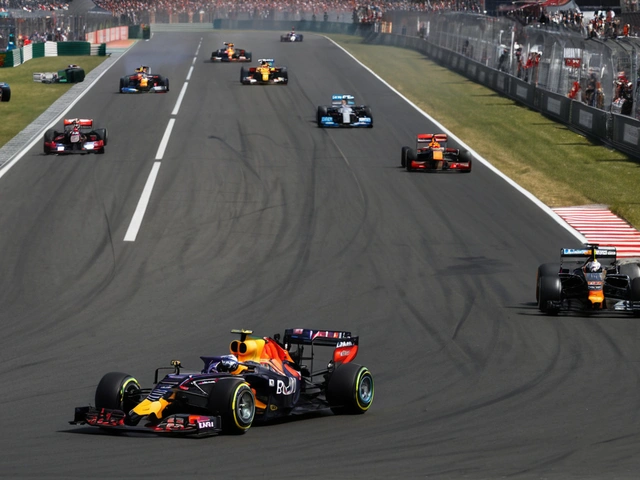FIA Intensifies Inspection on Front Bib Adjusters in F1 Cars at Austin Grand Prix
FIA's Rigorous Scrutiny at Austin's Grand Prix
The world of Formula 1 is synonymous with precision, innovation, and the ever-persistent quest for a competitive edge. Each team reaches for the pinnacle of speed and control, pushing regulations to the brink of tolerance. In this fiercely competitive arena, suspicions and allegations often emerge, indicating potential deviations from the set standards designed to ensure fair play. At this year's United States Grand Prix in Austin, the focus has turned to a critical component of the cars: the front bib adjusters.
The FIA is conducting a thorough inspection of these components, which are integral to the aerodynamic efficiency and performance of an F1 car. First, it began with checks on Red Bull's vehicles, following whispers that teams could be tapping into these adjusters for unauthorized advantages. The technical enigma surrounding these adjusters involves their capability to influence the car's frontal height under parc ferme conditions, a period when cars are supposed to remain unchanged.
Unraveling the Technical Tapestry
The inspection of the front bib adjusters carried out by the FIA is part of a broader campaign to maintain integrity within the sport. The central question: are teams discreetly tweaking the adjusters to modify car behavior during a race, potentially flouting regulations? The bib adjusters' role might appear mundane to spectators, yet any illicit modifications can yield significant advantages, such as improved tire grip or aerodynamic efficiency. Various teams, according to suspicions, have exploited this nuance to finetune cars beyond what’s permissible by altering the car's posture while static under parc ferme.
The complexity of compliance in Formula 1 cannot be understated. Teams are given specific allowances in car setups pre and post-race to maintain a uniformity that levels the competition field. In particular, any tinkering with the car's ride height, aero package, or similar setups after the final qualifying session but before the race is unequivocally forbidden. Such rules are intended to ensure that the car used in qualifying is identical to the one used in the race.
The Challenge of Enforcing Uniformity
McLaren's proactive call for further investigation into Red Bull's possible manipulation of these devices suggests that the issue has simmered for some time. The claim is not unprecedented; technical interpretations of regulations have always been a gray area in motorsport. Furthermore, the performance benefits gleaned from even minor adjustments can be profound, justifying why teams habitually aim to skirt the ruling boundaries.
The FIA's challenge is twofold. On one end, ensuring comprehensive inspections without hindering the competitive advantage of any team through unnecessary disruption. On the other, maintaining an unyielding stance against any illicit optimization efforts to preserve the sport's credibility. The ongoing inspections at Austin mark a critical moment—teams are on alert, aware that the FIA's technical team is employing advanced scrutiny to unveil any discrepancies.
Technical Inspections Amidst a Competitive Landscape
The inspections, still in progress, highlight a sobering aspect of competitively raced technology: the constant push and pull between engineering ingenuity and regulatory oversight. By extending their inspections beyond Red Bull, the FIA is sending a clear message: no team is exempt from the rules, and unfair advantages will face rectification. The inspections aren't just procedural—they're vital to maintaining an equitable, thrilling essence that Formula 1 stands for.
A technical ruling breach can have far-reaching implications. Penalties may vary from fines and point deductions to potential disqualifications. For teams, such inspections are reminders that while innovation and cutting-edge designs propel the sport forward, they also must continually pivot within the norms. The regulatory body's deft handling of such controversies reconciles the brilliance of engineering with the sport's integrity.
The Broader Impact on the Sport
Formula 1, amidst all its glamour, is dictated by stringent rules formulated to constructively regulate competitive practices. The scrutiny of front bib adjusters represents more than a check on engineering nuances; it's a step toward sustaining the wholesomeness of competition amid a landscape propelled by technological advancements.
With every Grand Prix, the margin for maneuverability tightens as teams delve into rapid technical evolutions, pushing limits while avoiding the patrolling gaze of regulations. This makes the FIA's role even more significant, bolstering the spirit of motorsport while dispelling apprehensions of misconduct. The conclusion of these inspections will inevitably shape the procedural rigor in upcoming races, establishing a precedent for future technical inquiries.
As the F1 circus continues its whirlwind tour across the globe, the Austin inspections serve as a vivid reminder that amid the splendors of speed and strategy, a balance of rules keeps the racing rigorously fair. Therefore, every turn on the circuit comes with an unspoken accord of responsibility — a dynamic interplay where sportsmanship and technical finesse blend in harmony.








